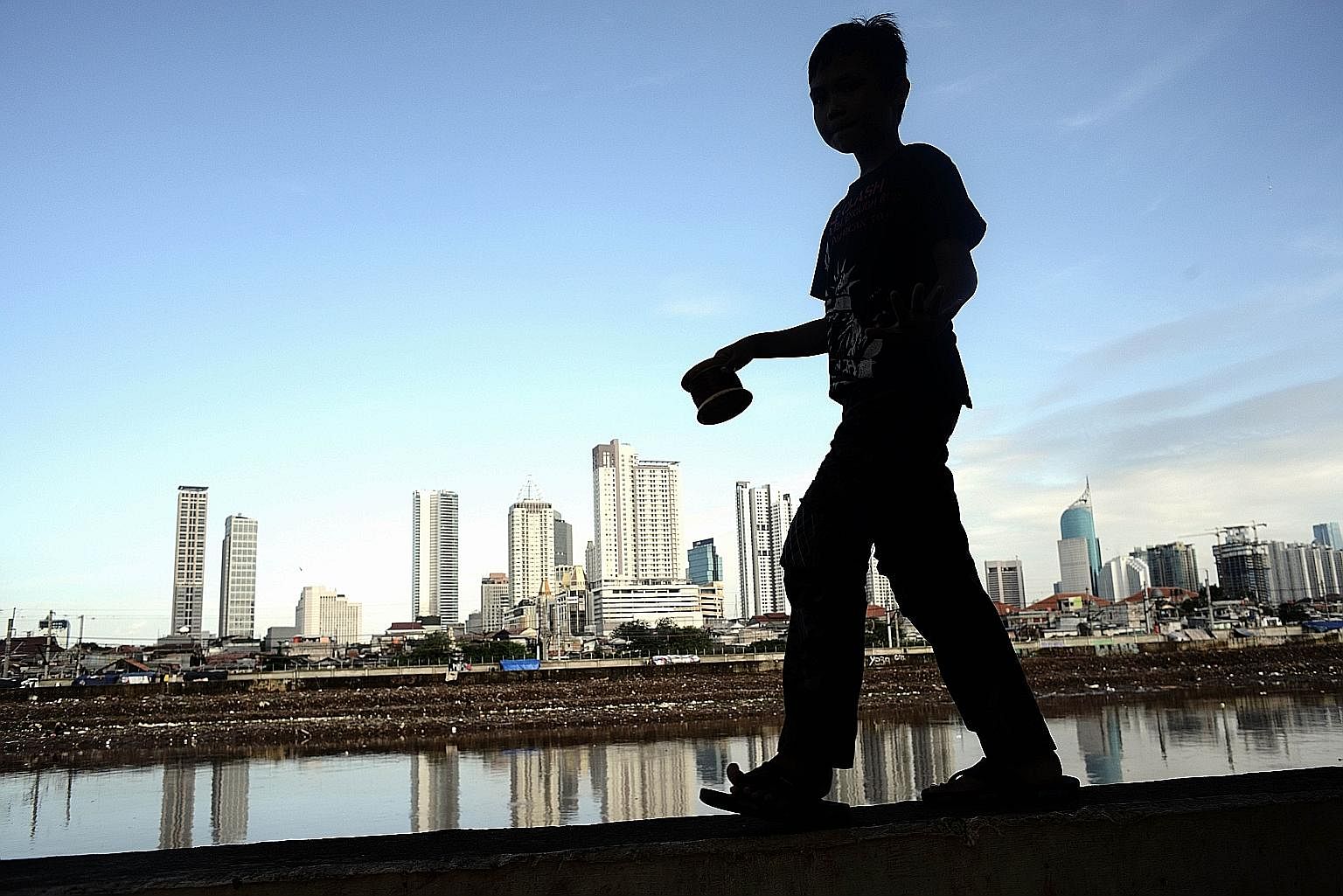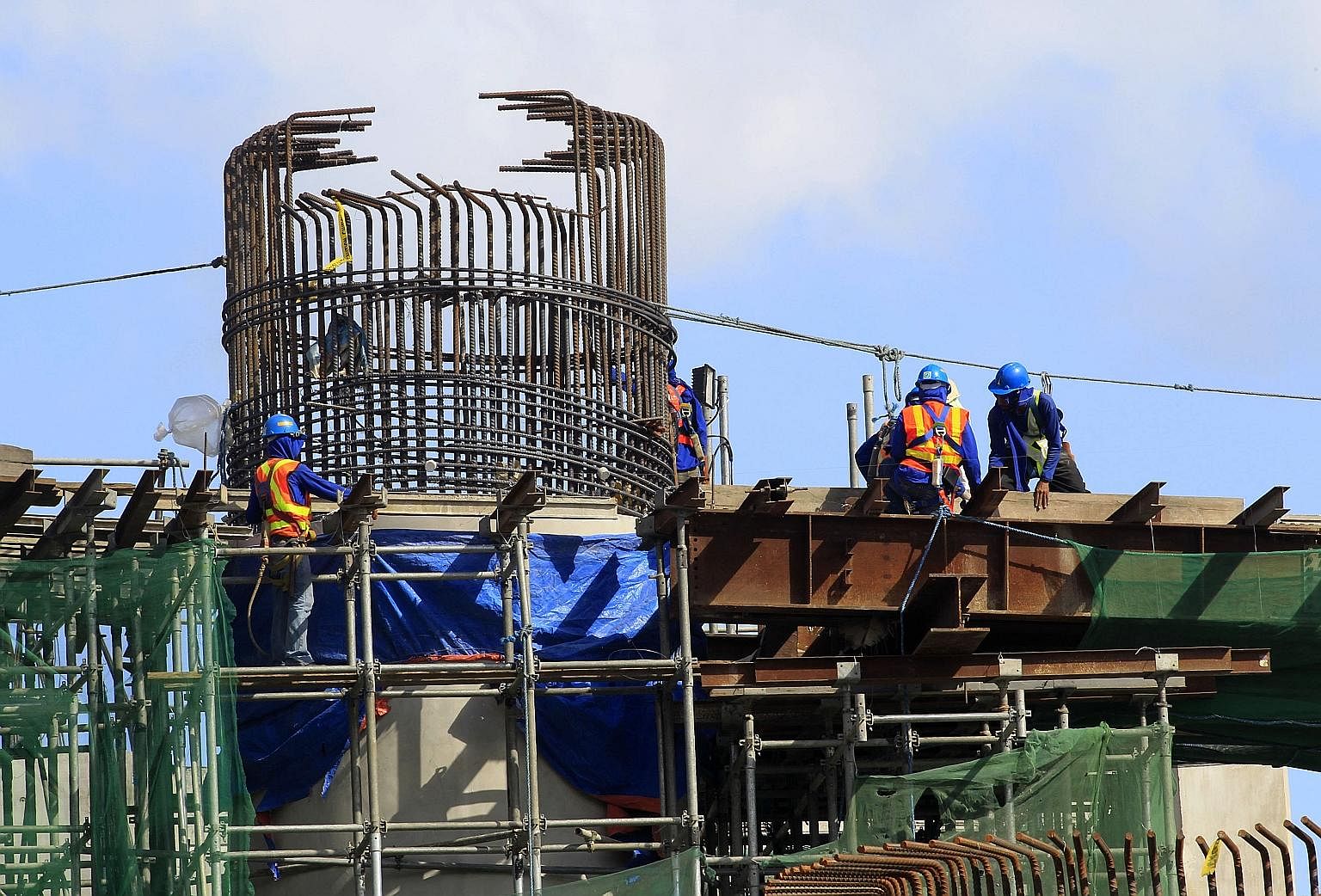For too long, institutional investors have shied away from emerging market infrastructure development, in part because they prefer mature projects with steady cash flow in a stable legal and regulatory environment. However, infrastructure financing, when structured right, could make for an attractive asset class for the institutional community, with huge positive impact on the region's economies. And now is precisely the time to pursue this asset class, even though South-east Asia's economies are cooling.
The Asian Development Bank forecasts that Asia needs US$8 trillion (S$11 trillion) in the decade to 2020 to plug the infrastructure deficit. As countries move up the value chain and urban populations expand, demand for transport, logistics and utilities will only continue to grow, increasing the burden on public funds.
Rising urbanisation in countries such as Indonesia and the Philippines will spur greater need for physical infrastructure and power generation capacity. Indonesia's Planning Commission is focusing its projects on mass transit, toll roads and airport development, while the priorities of President Benigno Aquino's government are in the development of ports, expressways and energy projects.
Given the massive requirement, the region may still face a funding shortfall even if the newly launched Asian Infrastructure Investment Bank (AIIB) provides annual loans of US$10 billion to US$15 billion for the first five or six years. Better-linked physical infrastructure which promotes the smooth movement of goods and services will also edge the 10 members in Asean closer to achieving its goal of seamless regional connectivity.
WHY INVESTORS SHY AWAY
It is, however, a misconception that private investors are not interested in infrastructure projects, and that this is to blame for the deficit. Instead, it is often the poor structuring of such initiatives that keeps private money at bay.

Commercial banks can provide the missing link in the infrastructure development picture. Not only do these banks have the ability to take on greenfield project risks and provide liquidity, they can also work with governments to create the right conditions for financing, which help in the creation of a sustainable pipeline of bankable projects.

Commercial banks' ability to structure transactions appropriately, so that risks sit with the most suitable party, is key to unlocking new sources of capital for infrastructure development.
Institutional investors outside the banking community often lack the appetite for diverse risks generated from projects in their initial, construction phase. Therefore, institutional investors are more likely to provide longer-term infrastructure financing once construction is complete if short-term commercial bank loans have been used to fund the early phases of the initiatives.
This mechanism works both ways. Greater institutional investor appetite will enhance the interest of commercial banks as commercial banks will have greater confidence that their early phase loans will be taken over by institutional investors. Similarly, a deeper infrastructure bond market will also provide an additional source of liquidity for infrastructure development. A robust bond market, just like institutional investors, can potentially also take over from commercial banks after the early phase of the projects has been financed by bank loans. Thus, it's a positive self-perpetuating infrastructure cycle. Greater institutional investor appetite combined with a more robust bond market give commercial banks greater confidence to fund more infrastructure projects.
While commercial banks are a main driver of infrastructure financing, multilateral development lenders, such as the AIIB, will still play a critical and complementary role to commercial banks, institutional investors, and bond markets. By providing assistance and guarantees, which have the effect of reducing risks, the AIIB can make capital projects more attractive.
Commercial banks and multilateral lenders also play a leading role in the coordination of regional projects, enabling cross-border projects to take root and bear fruit. For example, Indonesia's initiative to drive domestic power development is attracting leading power developers from across the Asean region, all supported by commercial banks.
Not only will higher-quality infrastructure catalyse trade and investment ties among Asean members, greater physical connectivity will also attract more visitors to the region, increasing consumption and growth.
The World Bank estimates that a 10 per cent increase in capital investment into infrastructure projects contributes to a 1 per cent growth in gross domestic product (GDP). Still, the basics have to be set right. Governments need to create an environment with a consistent legal and regulatory framework, alongside transparent governance and decision-making processes. Without these, investment in emerging economies will be viewed as more risky than similar opportunities in more developed countries.
Infrastructure development is not a silo initiative. It calls for a coordinated approach involving collaborative governments; multilateral development lenders; commercial banks with well-established global networks and expertise in appropriate risk structuring; viable capital markets and cash-flush institutional investors. Commercial banks are the fabric that binds all these parties together by ensuring that projects are structured efficiently from the start.
An efficiently structured infrastructure project ensures that the risks at each stage of an infrastructure project's life-cycle is appropriately mitigated and sits with the party best placed to take those risks. For example, during the construction phase of an infrastructure project, the risk should primarily sit with the contractor undertaking the work and the party overseeing that contractor. Once a project is complete, operational risk should be borne by the team operating the infrastructure asset. Inefficiently structured infrastructure projects put the wrong risks on the wrong party at the wrong time (for example, asking banks, who are not directly overseeing construction, to disproportionately fund construction cost overruns).
The time is ripe to develop infrastructure as an attractive asset class.
If infrastructure projects are structured efficiently, and private funds brought in at the optimum time, the region's infrastructure gap can be narrowed. And institutional investors will have a new opportunity to put their funds to work for a worthy cause with potential long-term returns.
• The writer is regional CEO for Asean and South Asia at Standard Chartered Bank.
• S.E.A. View is a weekly column on South-east Asian affairs.
